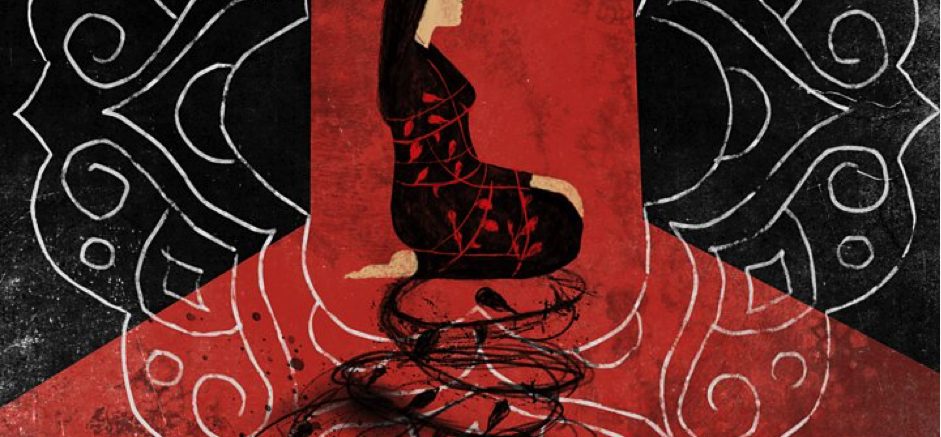Image courtesy of the BBC
RAPE IN INDIA
In 2012, six men gang-raped a young girl on a moving bus in Delhi. Many thought it was a watershed moment that started a fresh wave of anti-rape movement in the country.
However, this movement has a more extended history than we assume. In pre-Independence India, the nationalist-feminist campaign often raised the issue of sexual assault of native women by the British to galvanise young native men against colonial authorities. Post Independence, activists raised the issue of sexual assault to point to the ‘excesses’ committed by the State and the ‘ruling class’.
The persistence of patriarchal practices that consistently discriminate against women translate into not just abuse but, in many cases, the deaths of countless women according to Indian lawyer Indira Jaising. Indian society shames its victims and discourages them from voicing their experience or seeking justice. Attackers and their supporters often invoke ‘Indian culture’ in their efforts to justify sexual violence. They do so by claiming that the victim had overstepped her boundaries and had disgraced Indian feminine morality. It’s also a matter of debate that our attention tends to focus on specific cases while disregarding some.
HISTORY OF PROTESTS
One of the first rape cases to provoke mass protest was the 1978 case of Rameeza Bee in Hyderabad (1978). 22,000 protestors marched to the police station. They came to know about Rameeza’s rape and the beating of her husband by the police. They laid the husband’s dead body in the veranda of the police station, set up roadblocks, cut telephone wires, stoned the police station and set fires outside the compound. All across, the focus was on the documented riots that occurred in reaction to the rape. We know little to nothing about the victim Rameeza, or how the assault affected her life.
We saw a similar pattern in the brutal rape-murder of Thangjam Manorama from Manipur in 2004. Three hours after the Indian Army picked her up as a ‘suspected militant’, Manorama’s bullet-ridden dead body was found four kilometres away from her house, in a vain attempt to hide her rape. In response, the Meira Paibi, often know as the guardians of Manipuri civil society, stormed Kangla Fort in Imphal and stripped naked, taunting the soldiers to arrest and rape them. This time too, media and academic attention were on the novelty of the naked protest. There was almost no discussion over the use of custodial rape to silence the voice of a young female Meitei activist.
PROMPTING SOCIETAL OR LEGISLATIVE REFORM
While some cases have prompted fury and mass protests, very few led to large scale legislative or societal reform. Examples include the case of Mathura’s 16-year old and Bhanwari Devi from Rajasthan.
In 1979, the Supreme Court acquitted Mathura’s rapists. The defence argued that because Mathura, a minor Adivasi girl, had a boyfriend, she was habituated to sexual intercourse and therefore could not, by definition, be raped. As the judgement became public, four lawyers wrote an open letter in protest of the Court’s acceptance of the argument. The dissent questioned the legislative definition of rape. It led to protests and a nationwide campaign to demand changes in rape law. The government finally had to accede in 1983. An open letter’s direct acknowledgement of Mathura’s identity as an Adivasi girl put her in a severely disadvantaged position. She had little to no access to education or knowledge of her legal rights. The court disregarded the letter. And this is not discussed often.
Almost a decade later, Bhanwari Devi’s case brought about more pronounced legal reform with regards to rape. Five upper-case men in 1992 raped Bhanwari. She was a lower-caste woman, a grassroots worker employed by Rajasthan’s Women Development Project. They gang-raped her in retribution for preventing the arranged marriage of a nine-month-old. The case against her perpetrators has dragged on for more than two decades. It is now in a state of perpetual adjournment as two of the accused have died. However, even as the State failed to gain justice for Bhanwari, many feminist organisations rallied around her. They filed a public interest case that prompted the Supreme Court to pass the Vishakha Guidelines in 1997. These guidelines protect women from sexual harassment in the workplace.
Even though there is some tacit understanding of how Bhanwari’s lower-caste identity played into her rape, there hasn’t been much discussion on how it was used to shame and silence a grassroots activist and worker.
IDENTITY AND VICTIMHOOD
The national and international media widely reported the gang-rape of Jyoti Singh. It took waves of mass protests across the country for the government to recognise it as a political force. However, this time too, media and academics shifted their attention to Jyoti’s identity. She was the typical respectable Indian woman. A middle-class, urban, educated woman who was attacked by men belonging to the ‘criminal migrant’ population of Delhi. They robbed her of her honour, and the nation’s honour through her.
In the 2015 documentary India’s Daughter, Jyoti’s rapists justify the violence stating she had exceeded her prescribed gender role.
What is noticeable is the lack of mention of the rapes of Dalit and Adivasi women. Women such as Delta Meghwal, a 17- year-old who was raped in 2016 in Bikaner, Rajasthan. Or Soni Sori, an Adivasi teacher turned political leader in Jharkhand. Another stark example of this lack of mention is the Khairlanji case.
In Khairlanji, the upper caste for a long period intimidated and harassed the Dalit Bhotmange family. They wanted to seize their land. Eventually, the men were beaten to death and the women, Surekha and Priyanka, were brutally gang-raped and then beaten to death. Rape was used to warn other Dalit women in the region to not assert their autonomy or express their opinions. Unlike in Jyoti’s case it did not lead to any national outrage or get the media attention it deserved.
The court convicted four out of the five defendants in Jyoti Singh’s case. However, we have had limited or no success garnering justice for Surekha and Priyanka Bhotmange.
Academics such as Urvashi Butalia has written about linking Dalit identity of the victims with the upper-caste identity of their rapists. She has also mentioned the lack of media or academic attention to it. Identity becomes integral to understanding the dynamics of rape in India. Yet, there is minimal understanding of its intersection with sexual violence in the Indian context.
GAPS IN OUR KNOWLEDGE
From these examples it is evident that certain factors seem to draw the attention of academic and the media. However, what needs consideration is, do other victims and their cases not merit such analysis and prominece? Why don’t we discuss in national spaces, rapes of activists and dissidents such as Soni Sory and poor Naxal women? What about Dalit and Adivasi women such as Delta Meghwal, Lalasa Devi, Santhal women in Jharkand or Cholanaikkan women in Kerala? Why haven’t we given any media attention to women raped in disputed and heavily militarised regions such the Northeast and Kashmir (Asifa Bano or Aasiya and Niloufer Jaan)?
We barely mention the rapes of women in wartime or riots. What about the rape of Bilkis Bano during the 2002 Gujarat Riots? Or the rapes of thousands of Hindu, Sikh and Muslim women during the Partition? There are hundreds of articles on famous cases or those made known by media and academics. But, there is next to no conversation about the rapes that happen in the peripheries of our society.
Additionally, we can see a significant lack of attention paid to marital rape, paedophilic rape, and the ‘corrective’ rapes perpetrated on people who are a part of the LGBTQ+ community.
CONCLUSION
To understand rape in India we must consider three factors: The victim’s identity, whether it provoked mass protests and our biases towards marginalised groups.
Based on these three factors it becomes clear as to which cases we discuss and analyse in the public space. Our media consistently ignores rape cases of activists and dissidents, women from marginalised communities, women from regions experiencing civil unrest or people from the LGBTQ+ community. Without including all of these women and communities, we cannot have a real and substantial conversation about rape in India.
About The Author

Swagata is currently studying law and global politics and is a keen student of history. She has been an active campaigner for awareness about sexual assault keeping institutions accountable.
Some other blog posts you might like:
Image Source: BBC
Editor: Dr. Shruti Kapoor
